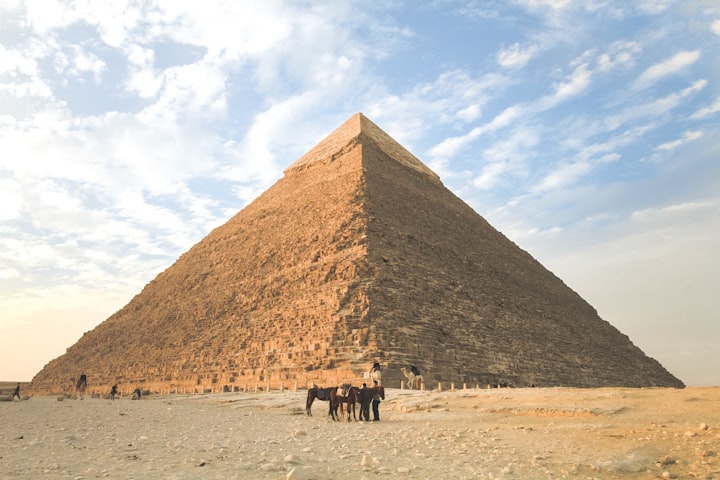
Muon Tomography
Muon tomography works by using the scattering pattern of muons as they pass through an object to create an image of its internal structure.
In muon tomography, a detector array is placed on one side of the object, while muons from cosmic rays pass through the object and are detected on the other side. The detectors record the trajectories of the muons, and by analyzing the scattering angles and positions, scientists can reconstruct the object's internal composition....
This technique has been used in various fields, including archaeology, geology, and nuclear waste monitoring. For example, in archaeology, muon tomography has been employed to explore the interiors of ancient structures without invasive excavation, providing insights into hidden chambers or structures.
In geology, muon tomography has been used to study the subsurface structures of mountains, volcanoes, and underground cavities. By imaging the density variations within these objects, scientists can gain valuable information about their composition, potential hazards, and geological processes.
Muon tomography also has applications in nuclear waste monitoring. By imaging the contents of sealed containers or underground repositories, scientists can verify the presence and distribution of radioactive materials, ensuring their safe storage and preventing unauthorized access.
Overall, muon radiography and tomography are powerful tools that leverage cosmic rays and muons to non-destructively image the interior of objects, from large-scale structures like buildings and mountains to smaller objects like archaeological sites or nuclear waste repositories. These techniques offer unique insights into inaccessible or hidden spaces, enabling scientists to better understand our world and make important discoveries.
"Seeing through" Pyramids
Muon tomography is a technique that has been used to "see through" structures such as pyramids. Muons are subatomic particles that are created when cosmic rays from space interact with the Earth's atmosphere. These muons can penetrate solid objects, including large structures like pyramids.
Muon tomography works by detecting the trajectory and intensity of muons as they pass through an object. By placing detectors around and within the structure, scientists can measure the absorption and scattering of muons, which provides information about the density and composition of the materials they encounter.
In the case of pyramids, muon tomography has been used to study the internal structure and potentially discover hidden chambers or voids within the pyramids. By analyzing the patterns of muon detection, researchers can create 3D images or maps of the interior, helping to reveal the presence of any hidden chambers or anomalies.
Muon tomography has been employed in various archaeological and scientific investigations, including the exploration of the Great Pyramid of Giza in Egypt and the Pyramid of the Sun in Mexico. It offers a non-invasive and non-destructive method to study these ancient structures, providing valuable insights into their construction and potential hidden features.
How were pyramids build
The construction of pyramids, particularly the famous Egyptian pyramids, involved a combination of skilled labor, engineering techniques, and organization. While the specific methods might have varied slightly across different periods and cultures, here's a general overview of how the pyramids were built:
Planning and Design: The construction process began with careful planning and design. Architects and engineers determined the size, shape, and orientation of the pyramid based on the pharaoh's wishes and the available resources.
Quarrying: The first step was to extract massive stones from nearby quarries. Egyptians used various tools like copper chisels, wooden wedges, and stone hammers to cut and shape the stones. They would then transport them to the construction site using sledges and possibly barges along the Nile River for larger stones.
Foundation: The construction started with laying the foundation. Workers leveled the ground and created a solid base using layers of stones or compacted soil. This ensured stability for the pyramid's immense weight.
Core Structure: The core of the pyramid was built using large, precisely cut stones. These stones were arranged in horizontal layers, each layer slightly smaller than the one below it, creating a stepped structure. The stones were held together using a combination of mortar and precise fitting.
Ramp System: To reach higher levels, ramps were constructed alongside the pyramid. These ramps allowed workers to move stones upwards using sledges, ropes, and possibly levers. As the construction progressed, the ramps were extended or repositioned.
Casing Stones: The outer layer of the pyramid, known as casing stones, provided a smooth and polished surface. These stones were often made of high-quality limestone or granite. They were meticulously cut and placed, giving the pyramid its iconic appearance.
Burial Chamber: Inside the pyramid, there were chambers and passages intended for the pharaoh's burial. The burial chamber was typically located in the heart of the pyramid, accessible through a complex network of corridors and chambers. These chambers were often lined with granite or limestone.
Completion: Once the pyramid's core structure was complete, the casing stones were added to cover the stepped structure. The construction might have involved additional decorations, such as inscriptions or hieroglyphs. Finally, the pyramid was considered finished.
It's important to note that the construction of pyramids was an enormous undertaking that required a vast workforce, including skilled artisans, laborers, and overseers. The exact techniques and scale of construction might have varied depending on the specific pyramid and the period in which it was built.
About the Creator
Rakshit
I am an explorer type of person who likes to explore and write on internet , After which i fount this website
and then tried to make my passion professional, so i hopped in and started wrtiting for you guys.. :)






Comments
There are no comments for this story
Be the first to respond and start the conversation.